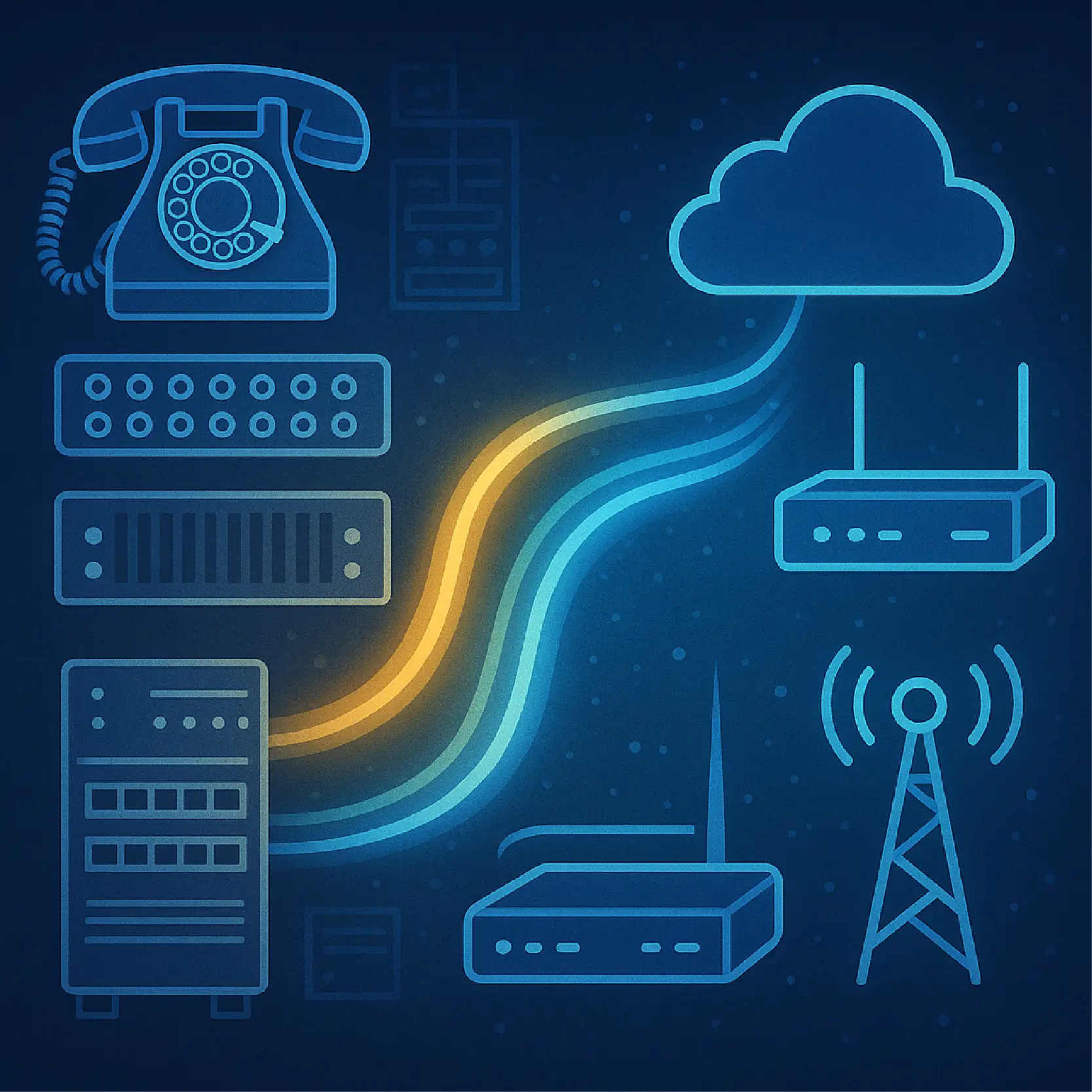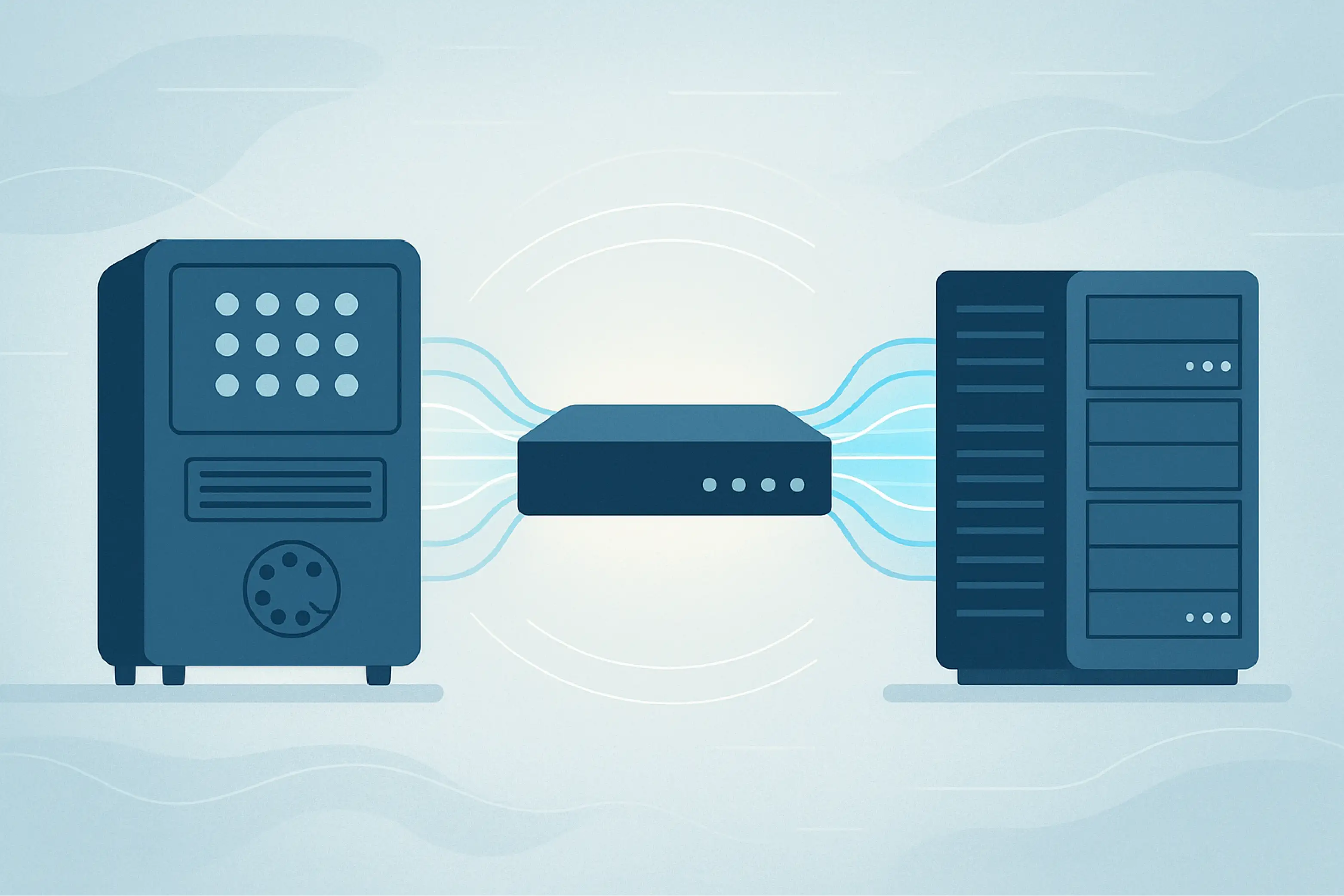Integrating Legacy Telecom and Monitoring with Your Modern Next-Gen Devices
By Andrew Erickson
May 14, 2023
As the telecommunications equipment - and the consumer and commercial demands for service - continues to evolve, you face a challenge. You have to modernize your network while minimizing disruptions and downtime. Integrating legacy systems with next-generation solutions is an essential part of this process. Still, it can be a daunting task.
Let's walk through the challenges faced by organizations who must modernize their networks. We'll then highlight strategies for integrating legacy systems with new technologies and discuss specific examples.
These are all techniques I've learned while working at DPS to help drive seamless transitions. My experience is in a remote-monitoring context, but I'm going to focus mostly on broader issues applicable to all technology migrations.
The Challenges of Network Modernization
The process of modernization first requires you to recognize the challenges that come with it:
- Compatibility Issues: One of the primary challenges you face when integrating legacy systems with next-generation solutions is ensuring compatibility between the old and new technologies. This can include issues related to hardware, software, and protocols.
- Data Migration: The process of migrating data from legacy systems to modern solutions can be time-consuming and prone to errors. This can lead to potential data loss or corruption, which can have a significant impact on business operations.
- Staff Training: With the introduction of new technologies, employees need to be adequately trained to operate and maintain these systems. This can result in additional costs and time investments, as well as potential downtime during the training process. I've seen firsthand the initial resistance that is possible, particularly at larger organizations tend toward conservatism and the status quo. With a bit of training and documentation, however, it's very possible to win the hearts and minds of your team.
- Cost Management: Upgrading and integrating network systems can be expensive, particularly when dealing with "very legacy" infrastructure. You must carefully manage your budget to ensure a cost-effective modernization process.
Strategies for Successful Integration
Now that we have the challenges of network modernization in mind, we need to review the complementary strategies that help ensure a successful integration:
- Thorough Assessment: Begin by conducting a comprehensive assessment of your existing network infrastructure, identifying potential compatibility issues and areas where upgrades are needed. This will help you to develop a detailed plan for integrating your legacy systems with next-gen solutions.
- Incremental Upgrades: Instead of attempting a complete overhaul of your network, consider implementing incremental upgrades. This can help minimize disruptions and allow for a smoother transition as you gradually replace and integrate components of your legacy systems. (I'll give you a specific example of this below.)
- Collaborate with Experts: Partnering with a company specializes in network modernization and integration goes a long way. Their expertise can help ensure a seamless transition by providing customized solutions, technical support, and guidance throughout the process. At DPS, customization (at least for the first client who needs something specific) is how we build the legacy support necessary to allow incremental upgrades.
- Comprehensive Staff Training: Develop a comprehensive training program for your employees to ensure they are well-versed in the operation and maintenance of the new technologies. This can help minimize downtime and reduce the risk of errors during the transition period. It's also how you push through organizational inertia at larger companies and agencies.

Specific examples from DPS: How a custom (or semi-custom) equipment manufacturer helps your transition process
It's always easier to learn when you hear a specific story that's easy to remember. I'll give you some now. Even though these examples are specific to my industry, they apply to almost any technology project.
For your reference, our range of products and services at DPS includes: remote monitoring and control systems, alarm mediation devices, and environmental monitoring solutions. These are all designed to be compatible with both legacy and modern networks.
Role of NetGuardians and Similar RTUs in Modernizing Legacy Systems:
Remote Telemetry Units (RTUs) are a good example of device that's "front and center" for any kind of technology migration. That's because, by its very nature, remote monitoring must connect to all of the things it must monitor.
In particular, my work with NetGuardian RTUs relates to legacy-modern integration in the following specific ways:
- Advanced Monitoring: NetGuardian RTUs provide comprehensive remote monitoring capabilities, enabling organizations to effectively monitor and control their network infrastructure, including legacy systems. These units support a wide range of protocols and interfaces, ensuring compatibility with both existing and new equipment. The most common distinction I see between new and legacy equipment is the monitoring of contact closures and protocols like MODBUS. To support transitions and migration, NetGuardians support both.
- Scalability: NetGuardian RTUs are designed to be scalable, allowing organizations to expand their monitoring capabilities as their networks grow and evolve. This flexibility makes it easier for you to modernize your legacy systems incrementally, minimizing disruptions and downtime. For example, you might install a base NetGuardian first. You might then add a "DX Discrete Expansion" shelf later to add additional monitoring capacity at a growing site.
- Enhanced Security: NetGuardian RTUs offer robust security features, including encrypted communication and user access controls, ensuring the protection of network infrastructure during the modernization process. It's impossible to fully anticipate the cybersecurity requirements of tomorrow, but we offer firmware upgrades as long as the underlying NetGuardian hardware is capable. Eventually, we have to release a new hardware generation to keep up with modern requirements, but we don't artificially create planned obsolescence.
- Environmental Monitoring & Other External Sensors: With built-in sensors and support for additional external sensors, NetGuardian RTUs help organizations monitor the environmental conditions within their facilities, safeguarding equipment and maintaining network uptime during the transition to modern systems. More broadly, it's useful to note that external sensors exist independently of modern-vs-legacy concerns. That's because they directly measure the outside world instead of depending on compatibility with ports, connectors, and protocols.
- Centralized Management: T/Mon provides a centralized platform for managing and monitoring alarms from both legacy and modern equipment. This single-pane-of-glass approach simplifies network management, enabling organizations to effectively oversee the modernization process and maintain visibility across their entire infrastructure. T/Mon really came to prominence by supporting proprietary and legacy protocols as our client base requested it. That philosophy is still true today, with some T/Mon sales involving the custom addition of a new protocol as part of the deal.
- Protocol Mediation: T/Mon is capable of mediating between various protocols, ensuring seamless communication between legacy systems and next-gen solutions. Any alarm data absorbed through any of T/Mon's protocols becomes a generic internal alarm object. That can then be forwarded in any of T/Mon's output protocols. This is an effective way to forward MODBUS alarms as SNMP, as one example of many different possibilities.
- Customizable Reporting and Notifications: With T/Mon, organizations can customize reports and notifications to suit their specific needs. This often comes into play whenever new corporate policy or government regulations require new data reporting.
You can complete a successful migration from legacy to modern equipment
Integrating legacy systems with next-gen solutions is a critical aspect of network modernization for many organizations. By employing strategic planning, collaborating with industry experts like DPS Telecom, and investing in comprehensive staff training, you can overcome the challenges associated with this process and ensure a smooth and successful transition.
With the right support and approach, your organization can enjoy the benefits of a modern, efficient, and reliable telecommunications network.
Call DPS to speak with an engineer about your project and receive free guidance
DPS engineers are standing by to help you tackle the challenge of modernizing your legacy systems. We're here to help you make the right decisions for your network.
We can get you started on the basics for nearly any technology project. If your project involves our remote monitoring specialty, we can also help you with equipment recommendations in that particular area.
To talk to an engineer, call 1-800-693-0351 or sales@dpstele.com

Andrew Erickson
Andrew Erickson is an Application Engineer at DPS Telecom, a manufacturer of semi-custom remote alarm monitoring systems based in Fresno, California. Andrew brings more than 19 years of experience building site monitoring solutions, developing intuitive user interfaces and documentation, and opt...



